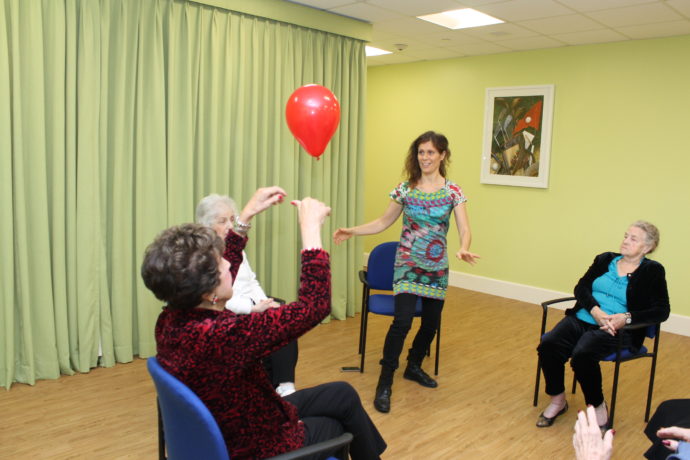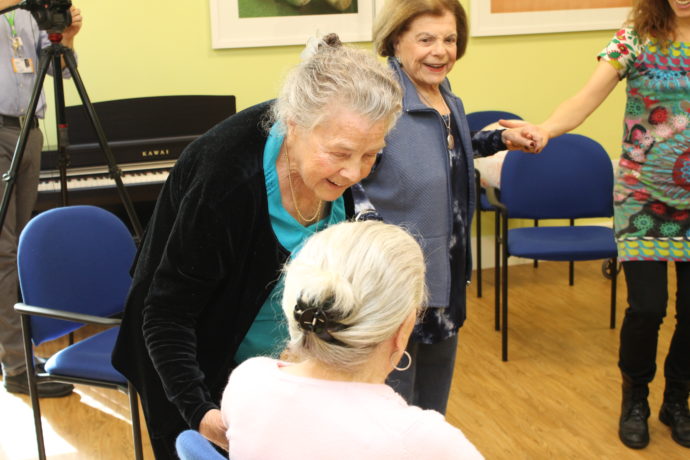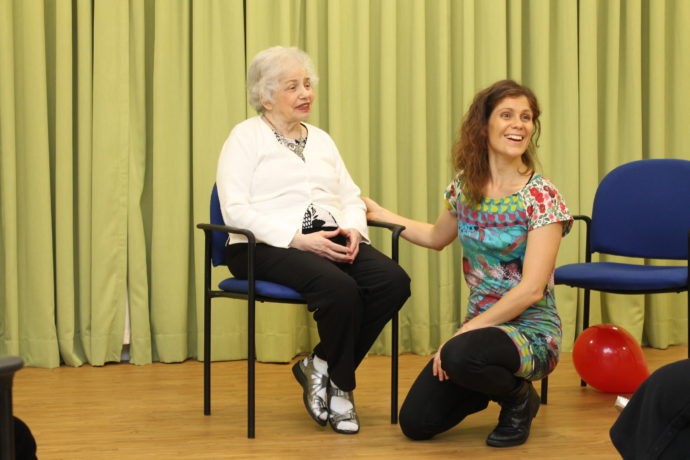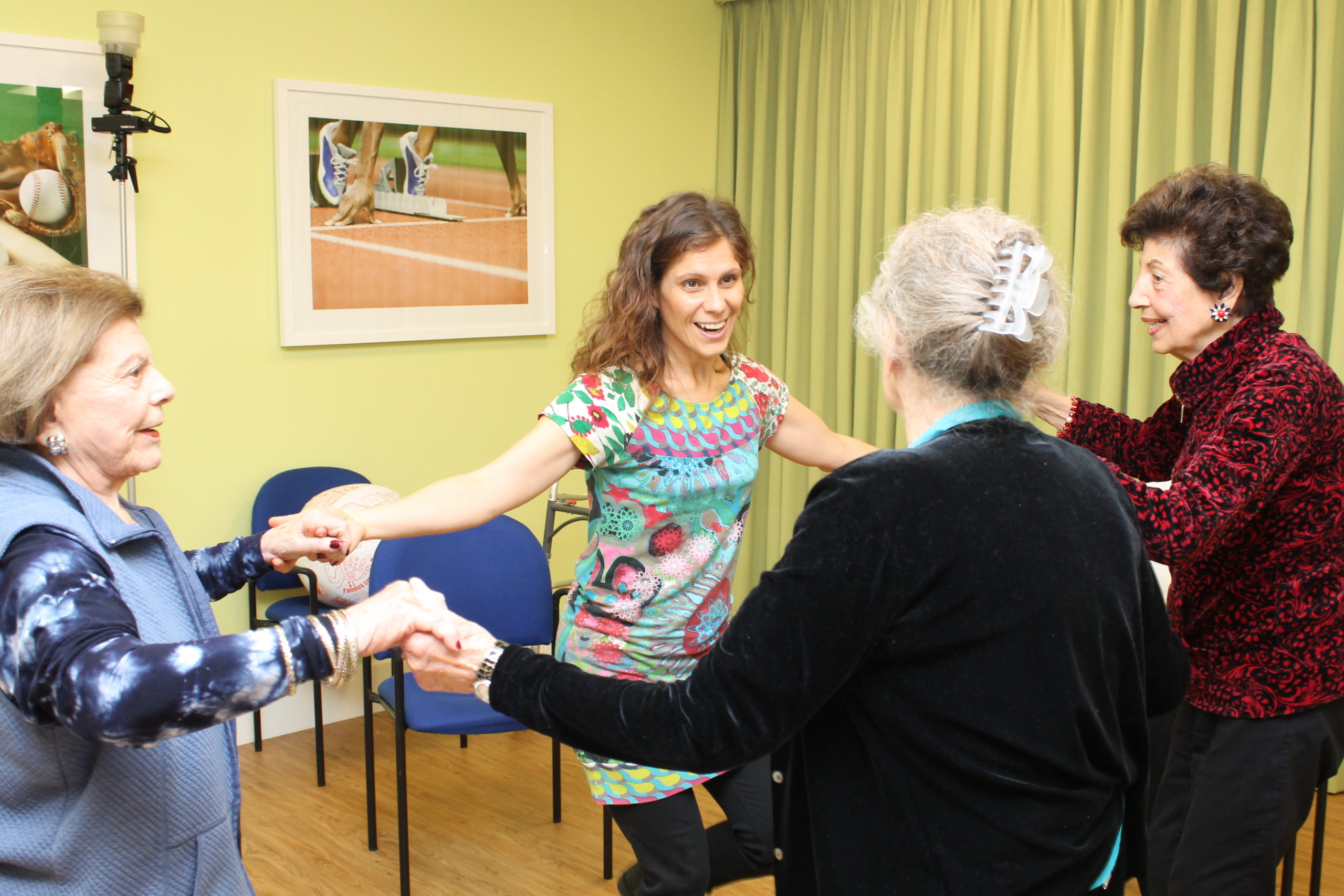Residents of The Bristal at Lake Success are flying away with Frank Sinatra every week as part of a partnership with the Feinstein Institute for Medical Research to study the effects of dance on memory care patients.
Mary Salerno, 84, Berthe Odnoposoff, 92, Paula Smith Levitt, 88, Esther Feldman, 83, and Phyllis Roth, 86, spent only a few songs with dance and movement therapist Cecilia Fontanesi but the change in the five residents was noticeable.

Fontanesi, a Ph.D. candidate at City University of New York, said she does not teach a series of steps or a style of dance to the residents, but instead plays familiar music and encourages the women to increase movements that are already happening naturally, such as hip or shoulder sways.
“What I see is what is alive in them, and that is expression, emotion and the ability to have an impact on other people, which at an older age is everything,” Fontanesi said. “For older people, it’s essential and vital to find a sense of purpose and meaning in their lives, which can come from the connection to one another. By the time they dance together and leave the session, everyone is smiling, they may be talking to each other, or they may be holding hands, and that for me is invaluable.”
During a news conference Thursday, the five women listened to three Frank Sinatra classics, warming up by passing a balloon around the circle from a seated position first, moving to standing in a circle and dancing before pairing off and dancing with a partner.

Women with higher levels of cognitive abilities often helped those still in chairs, and Fontanesi said any movements can be adjusted for sitting or standing.
Dr. Peter Davies, director of the Litwin-Zucker Center for Alzheimer’s Disease and Memory Disorders at the Feinstein Institute, said the partnership is a natural collaboration because the institute and the assisted living facility are both interested in the same thing: how to maximize the quality of life for the residents and all memory care patients.
“Think about your own life. When you learn something new or when you have a new experience, especially an experience like dance, it changes your brain,” Davies said. “It changes the way you move, it changes the way you think, it changes the way you feel, it changes your brain. These kinds of activities can produce permanent changes in the brain, so we’re both very interested in how good this therapy is.”

Davies said residents were evaluated before the classes began and will be re-evaluated after 12 weeks to see what improvements the women made. While he cannot say how the therapy affects their cognitive abilities before the second round of testing, he said he is expecting promising results.
“I have high hopes that the function will actually improve, and I think that’s likely, but that’s the purpose of the study,” Davies said.
Kimberly Bent, executive director of The Bristal at Lake Success, said the facility became the company’s first all-memory care option in March, working solely with residents with Alzheimer’s disease and various cognitive impairments. Bent said the early weeks have helped socialize residents.
“The Bristal is very much excited to embark on this partnership with the Feinstein Institute, and we’re very much confident the research done here is going to positively impact our residents as well as others around the world living with these diseases,” Bent said.



